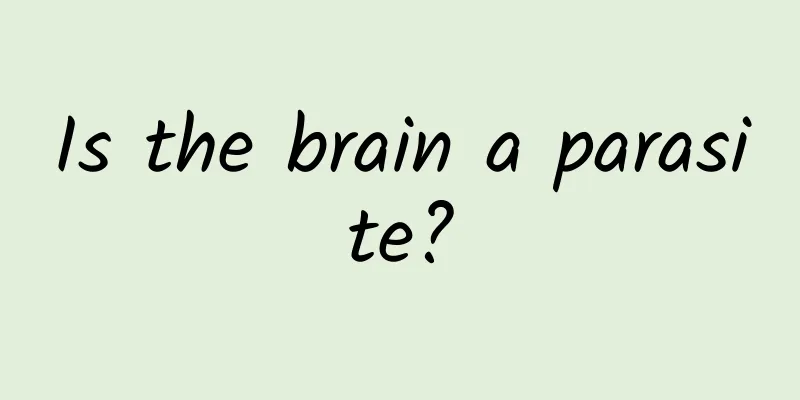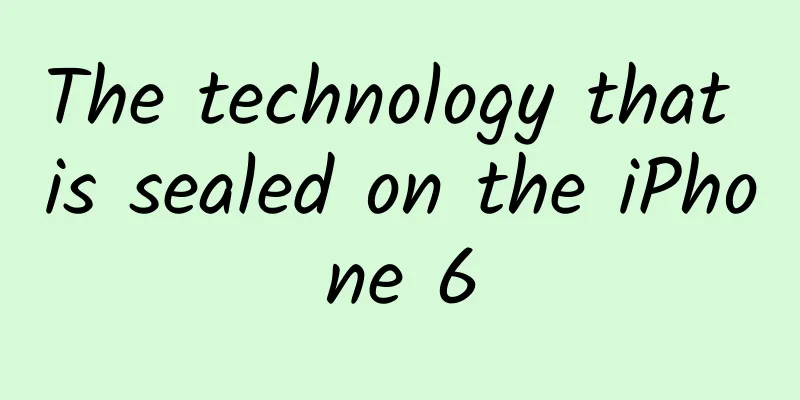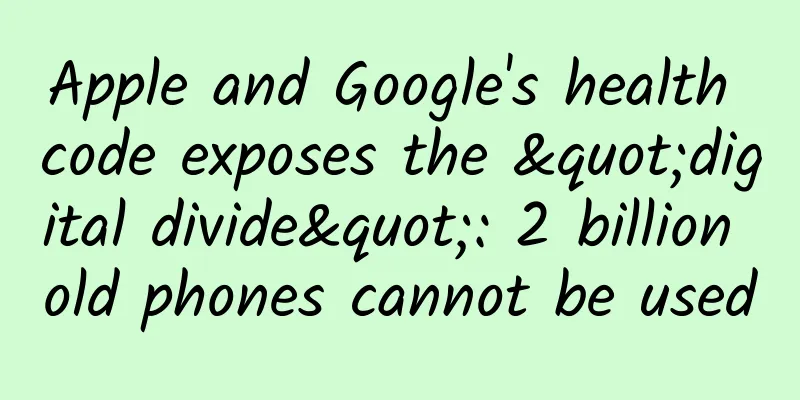Is the brain a parasite?

|
Some time ago, I saw a netizen ask, "Is it possible that the brain is a parasite?" First of all, the brain is definitely not a parasite! Why do we say that? The most important evidence is that brain cells and other body cells have a completely identical set of genomes. Whether it is parasitism or mutualism, it requires two organisms, and even endosymbiosis must have two sets of genomes. Today I will talk about this topic from the perspective of biological identification standards and parasitism. 01. From the perspective of the gold standard of biological identification Take mitochondria, which I know more about, for example. Mitochondrial and human genomes are completely different. The mitochondrial genome is 16,569 in length and encodes 37 genes, mainly related to the respiratory chain; the human nuclear genome is 3 billion in length and encodes 20,000 to 30,000 genes, including all content. There is no sequence homology between the two! The genomes of brain tissue and other tissues are all human nuclear genomes. The gold standard for modern biological classification is to use the genome rather than appearance, because many classification methods in the past were prone to errors. Some species that look different are actually the same genus, while others that look very similar are actually classified very far apart. For example, tree shrews that look like mice are actually close relatives of humans, while Tibetan mastiffs and teacup dogs look like two completely different species, but there is no reproductive isolation. Since the brain is genetically identical to the rest of the human body, it's clear that they are the same organism. 02. From the perspective of parasitism 1. Humans develop from fertilized eggs. If they are parasitic, when did they invade and infect? Second, all the organ traits of the human body are encoded by 23 pairs of chromosomes, which is the case for every generation (except Down syndrome). If it is parasitic, it will not be integrated into the genome. 3. The nervous system is very ancient and did not appear suddenly. It is the result of the diversification of multicellular organisms. Finally, you mentioned the endosymbiosis hypothesis. In fact, endosymbiosis and parasitism are two completely different things. Some genes can be absorbed and integrated by us, but once integrated, a new system is formed, which is no longer separate and is subject to the expression regulation of the entire system. Just like if you separate the mitochondria, you can't restore them to the original bacteria and the original life. When it comes to human parasites, roundworms and schistosomes are typical parasites. They are not naturally occurring, but formed after birth. By the way, this is actually a bit of a paradox. If it is two organisms, it is parasitic. If one of them is integrated, then it is no longer parasitic, but becomes the same life. This situation is very common. There are many such imprints in our genome. For example, the virus that invaded the human genome millions of years ago changed the on and off mode of genes in human embryonic stem cells. 03. Supplement 1: Endosymbiotic hypothesis The endosymbiotic hypothesis states that mitochondria and human cells are independent of each other, and that the former is eventually engulfed into the cell and becomes an organelle of the cell, but still has its own set of DNA. The evidence for endosymbiosis is that mitochondria have their own independent DNA and double membrane system. But mitochondria cannot survive on their own. Although they can synthesize 37 genes, other necessary genes, such as synthesis machinery, need the help of somatic cells to synthesize them. Without somatic cells, mitochondria will die. So it can be figuratively regarded as one country, two systems. For example, mitochondria and chloroplasts are endosymbiotic. Is it just because one can generate heat and the other can absorb light that they are endosymbiotic? Of course not. If they were special, the Golgi apparatus would be a high-level technician, the endoplasmic reticulum would have a high-level membrane system, and the ribosome would be a New Oriental chef. Then why do we never mention that they are endosymbiotic? There is only one fundamental reason. Chloroplasts and mitochondria have their own set of genomes, which are completely different from those of humans and plants, but are very similar to those of bacteria (circular DNA, 70s ribosomes, and the amino acid is actually N-formylmethionine), so there is an endosymbiotic hypothesis. The following is a guess about its formation process. I think there are two premises: First, at that time, the earth was still a single-cell organism. The reason is that if it were multi-celled and swallowed up mitochondria, it would be impossible to ensure that every cell had mitochondria. Second, mitochondria and somatic cells have emerged in their own independent kingdoms, with mitochondria belonging to the bacterial kingdom and somatic cells belonging to the eukaryotic kingdom. The reason for this is mainly based on the different genomes of the two. At this time, the mitochondria are like fanatics, producing energy madly and reproducing quickly. As for somatic cells, at this time they are already cells with more advanced functions. Unlike mitochondria that only produce energy, they balance their functions. For example, some are responsible for heat production, some are responsible for absorption, some are responsible for metabolism, some are responsible for synthesis, and some perform other functions. One day, a body cell accidentally swallowed a mitochondria, which is very common because cells absorb larger substances through endocytosis. Then, the digestive ability of this cell may be average, after all, it is an all-rounder, and it is impossible for it to evolve a very powerful digestive function alone (all-rounder means comprehensive development rather than partiality). Then the two look at each other, oh, mutualism. Mitochondria, the prince of partiality, provide energy, as for how to obtain glycolipids, eggs and synthesize proteins, it does not need to worry about it, and the somatic cells provide it with everything, and then draw energy. So the two lived happily ever after. 04. Supplement 2: Why somatic cells cannot directly integrate the mitochondrial genome This is also one of the bases for the endosymbiosis I mentioned above, which is DNA. I proposed the demarcation theory because mitochondrial DNA is similar to bacteria, but somatic DNA is not. The similarity here is not just a casual statement, but the species differences between the two in base composition, RNA composition and codon usage, which are the differences between bacteria and eukaryotes. I think the direct reason for the lack of integration is that the genomes are too different to be integrated. The viral genome is not that large. As for digestion into bases, there must have been many mitochondrial ancestors that were eliminated in this way, and only one was preserved. 05. Supplement 3: On mitochondrial maternal inheritance Some people ask why we need to eliminate the paternal mitochondria. Actually, strictly speaking, they are not eliminated. Firstly, sperm carries too few mitochondria, which is a drop in the bucket compared to egg cells, so it is diluted. Secondly, there is evidence that at least during the fertilized egg period, mitochondria from the father can still be found in the body. Where did they go afterwards? They should have been degraded or diluted, but there was also a case of a patient whose mitochondria from the father appeared in his body. This is called mitochondrial heteroplasmy in biology, and paternal origin is a very, very small cause. |
<<: Shocked! Eating, drinking and having fun can actually cause this disease?
Recommend
LinkedIn Global Vice President: The growth process from 0 to 500 million users
I joined LinkedIn in 2011, and since then I have ...
What is Xu Jiayin’s real intention when he emphasized that “seeing is believing” after inspecting Jia Yueting’s FF?
Evergrande Chairman Xu Jiayin spent nearly HK$7 b...
12 viewpoints on knowledge payment + fan fission operation!
In the context of knowledge payment , more and mo...
With the development of iOS and Android systems today, do they still need to fight to the death?
In the first half of this year, Apple and Google ...
Seres Financial Report: Seres' Revenue in 2024 Will Be 145.176 Billion Yuan, a Year-on-Year Increase of 305.04%, a Record High
According to recent news, SERES disclosed its 202...
If you have tested positive, can you take off your mask when you go home for the Spring Festival? Latest answers from experts →
During the Spring Festival, the mobility of peopl...
How to use growth hacking thinking for promotion?
Back to August 1, 2017, at 11:23 am, I was still ...
Data | Online advertising revenue exceeded 67 billion in Q2 2016, data drives advertising value increase!
Overview of Internet Advertising Development in Q2...
OTT advertising: Compared with scale, we should pay more attention to the rise of living room consumption scenarios
As an emerging advertising channel, the scale of ...
Case solved, this is what the different postures on the ibuprofen boxes mean!
Audit expert: Gu Haitong Deputy Chief Physician o...
Is Yunnan welcoming the "blind box" season? 3,000 kinds of exotic "mushrooms" for you to choose from!
Yunnan Provincial Local Chronicles Compilation Co...
The latest progress of Android Studio 4.0, these new features are really awesome
[[281021]] Latest progress, these new features are...
A method for batch creation of short videos with high conversion rate and selling products on Douyin!
1. Short video creation logic of live streaming m...
Who is the first animal in the world to make active sounds? When life began to chirp
Author: Global Science We are used to the fact th...









